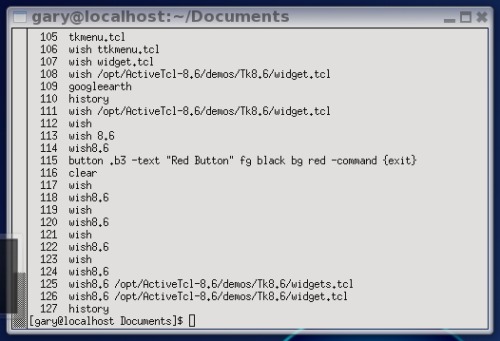

Variable names with whitespace characters in them need to have curly brackets around them for Tcl to understand them, or else Tcl would assume the variable name ends at the space or any other non-alphanumeric, non-underscore character.Īlternately, use the command with only one argument to get the value of a variable. The following is an example of various valid variable names: set age 42

Variable names can be made up of almost any characters, but it is usually easiest to use just letters any numbers. Variables hold values (What sort of values? Any!) You read from a variable by putting a $ in front of its name, and you write to it using the set command. Or you would go through whatever the steps are to associate tclkit as the program to use with files that end in. So on Windows, you would either type: tclkit.exe hellowworld.tcl
#Activetcl run tcl script windows
It is my understanding that the default command processor on Windows ignores the #! line anyways. LV On Windows, the first line is probably not relevant until you start using Cygwin or some other Unix emulation on MS-DOS package.

Thus, instructions can be written in a more cross-platform manner. And Unix users who use a GUI file manager can do the same thing. However, by doing so, then on Windows, one can associate the tclkit with the file. Note that if you are on Unix, there's no requirement to end the file name in. Scripts run with wish won't exit (and/or return output) until you close them manually if there is no exit command. Especially if you use Windows and/or ActiveTcl and have. LES: calling ' exit' at the end of every script can be a good habit. In the above example, it may be necessary to replace " tclsh" with " tclsh.exe", " tclkit", " tclkit.exe" or whatever your Tcl interpreter is called. In this example, a file called hello.tcl contains the following text: #! /bin/env tclsh emj Exactly, which is why we need examples as well. These basic programs serve mostly to show the absence of the kind of incantations that are required when programming in a language like C.Īa I think the Endekalogue provides a more useful introduction to Tcl syntax, though it's likely that only someone who is already familiar with Tcl's quoting and substitution rules - and who isn't burdened by trying to see it in a C-like context - will understand it easily. It's supremely simple and straightforward. It's unlike the syntax of most other popular languages. The following basic programs written in TCL will give you a general introduction to the TCL syntax: Comments on Tcl Syntax editĪa - Tcl syntax isn't anything like C syntax. Program 6: Checking for an Age Range Summary edit


 0 kommentar(er)
0 kommentar(er)
